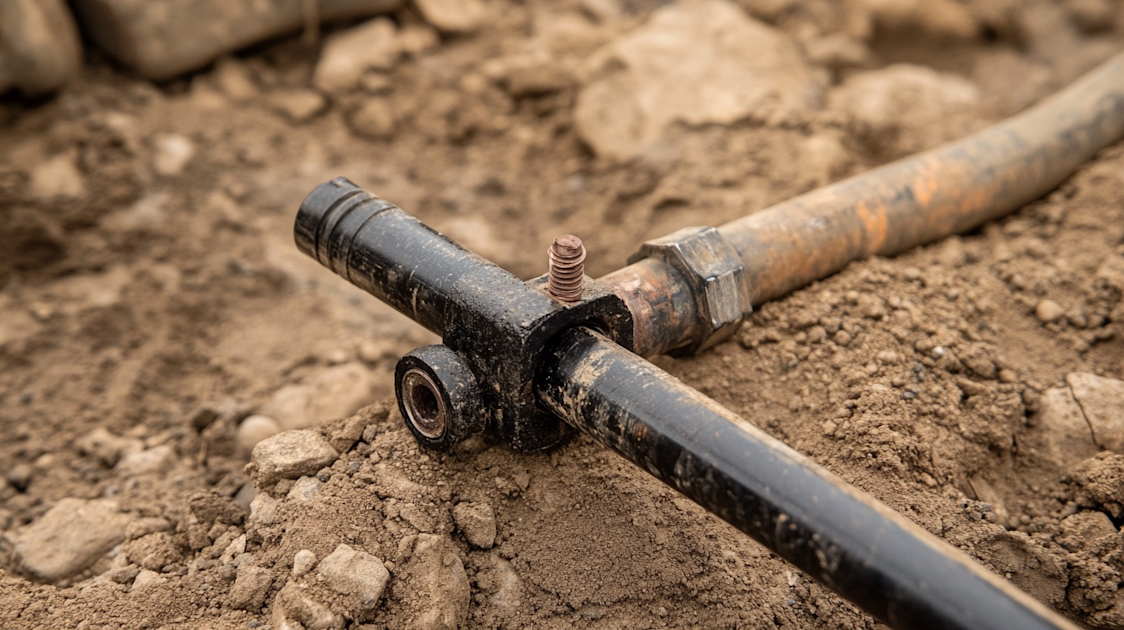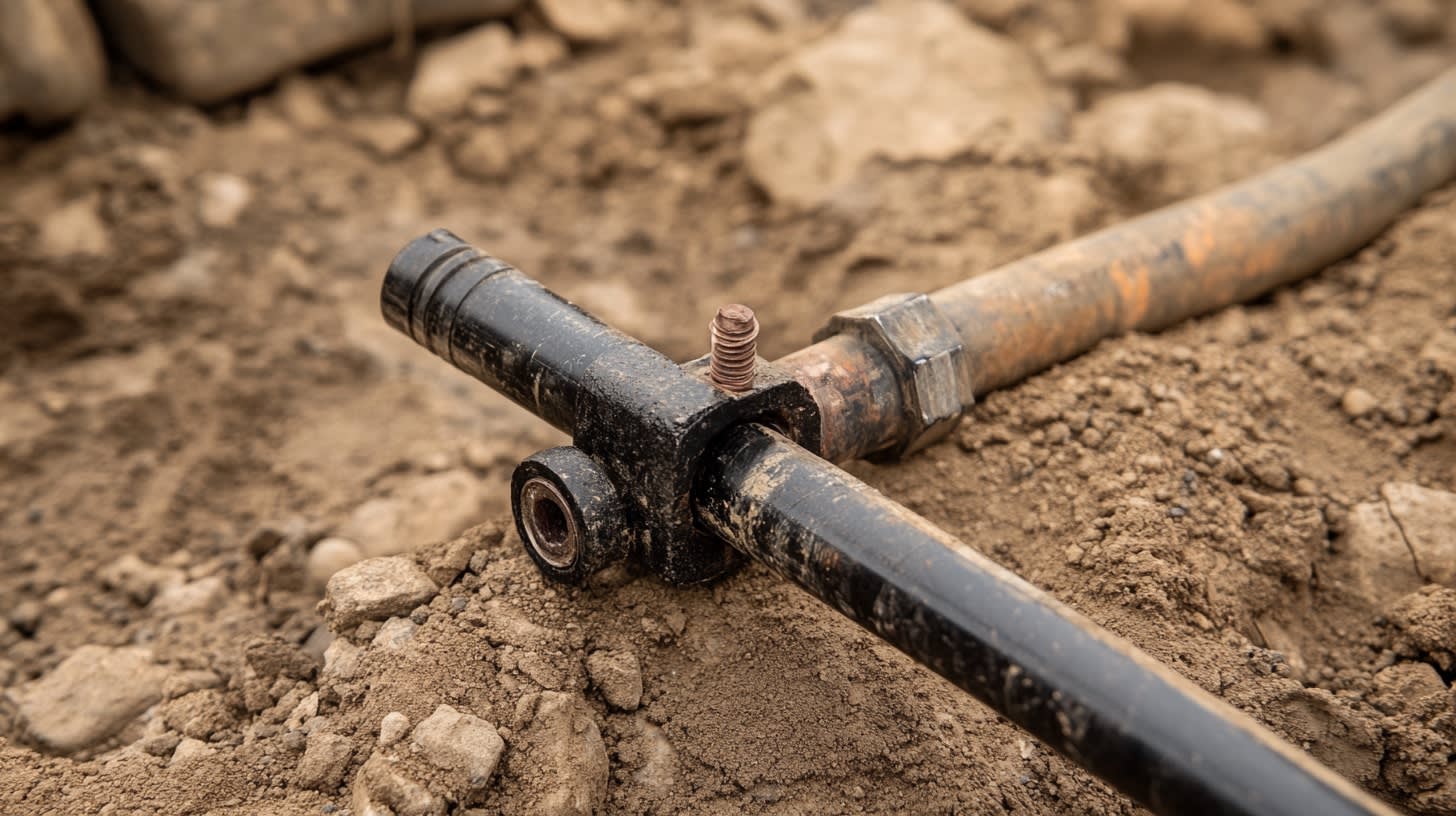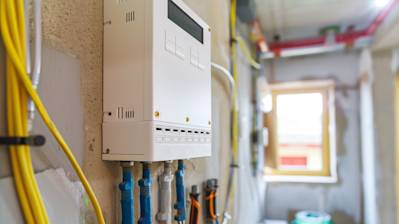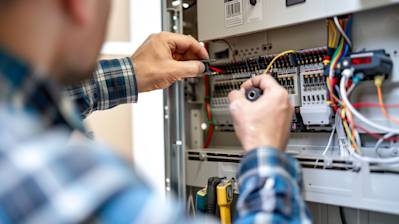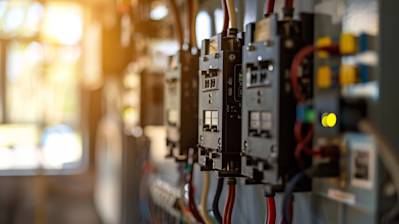The ability to effectively ground electricity in your home or workplace is vitally important, and the use of a ground rod clamp plays a crucial role in this process. In this blog, we will comprehensively cover what a ground rod clamp is, the importance of using one, how to choose the right type for your needs, its installation process, and its maintenance. With safety being indispensable in handling electricity, having a good understanding of the ground rod clamp will greatly enhance your safety measures.
Understanding What a Ground Rod Clamp Is
A ground rod clamp is a device used to connect the ground wire of an electrical system to the ground rod. The ground rod, driven into the earth, serves as the common reference point for the electrical systems. The clamp is designed to secure the wiring, ensuring that electrical surges can be safely diverted into the ground. Coming in different sizes and materials, ground rod clamps are an essential part of the electrical grounding system.
Why Ground Rod Clamps Are So Critical
Ground rod clamps bear a significant role in maintaining the safety of an electrical system. Here’s an overview of their importance:
Safety Provision: Ground rod clamps provide protection against electrical shocks. They help in diffusing overvoltages and short-circuits into the earth, hence preventing fatal electrical accidents.
Protection Against Electrical Surges: Apart from personal safety, ground rod clamps also keep electrical appliances safe. They prevent damages from electrical surges, enhancing the lifespan of electrical appliances.
Choosing the Right Ground Rod Clamp
When it comes to selecting a ground rod clamp, various factors come into play, including:
Material: Ground rod clamps are made of different materials such as copper, bronze, or stainless steel. Your choice would greatly depend on the nature of the soil in your area.
Size: The correct size of a ground rod clamp is determined by the diameter of the ground rod and the gauge of the wire to be connected.
Durability: Since the clamp is often exposed to harsh environmental conditions, its durability is a vital consideration.
Picking the right ground rod clamp ensures optimal performance and longevity of your electrical system.
The Installation Process of Ground Rod Clamps
Installing a ground rod clamp is a step-by-step process that requires careful execution. For best results, you should adhere to the following steps:
Start by driving the ground rod into the ground until only 6 to 8 inches of it are above the ground.
Loop the grounding wire around the ground rod, leaving a few inches of wire remaining.
Position the ground rod clamp over the wire and ground rod, ensuring that the wire rests in the groove of the clamp.
Tighten the clamp screw onto the wire using a suitable wrench, ensuring a solid connection.
Remember that an incorrect installation of a ground rod clamp can compromise the entire grounding system. Hence, if you're unsure, it's advisable to seek professional help.
Frequently Asked Questions about Ground Rod Clamp
What are common materials used to manufacture ground rod clamps?
Ground rod clamps are generally manufactured from bronze or brass. Sometimes, they are also made with high-strength copper alloy. This is primarily because these materials have high conductivity and are corrosion-resistant, which are two crucial properties for ensuring the efficiency of grounding systems.
What’s the role of a ground rod clamp in grounding systems?
Ground rod clamps act as key connectors in grounding systems. They secure the grounding wire to the ground rod, helping to ensure a reliable connection. This is critical as it enables the current to flow freely from the electrical system into the ground, reducing the risk of electrical shock and system damage due to power surges.
Where can I buy a ground rod clamp previously unknown to me?
Ground rod clamps can be purchased from various places. Home improvement stores, hardware stores, and specialist electrical shops are common sources. Various online retailers like Amazon, eBay, and others also list numerous types of ground rod clamps. It's advisable to research before buying to ensure that the rod clamp meets the specific requirements of your project.
Are there different types of ground rod clamps?
Yes, there are different types of ground rod clamps available. The main types include lay-in ground clamps and direct burial ground clamps. Lay-in ground clamps are usually used for rebar and rod connections in concrete applications. Direct burial clamps are utilized in systems where the clamp needs to be buried in the ground or concrete.
How do I install a ground rod clamp?
Installing a ground rod clamp is a relatively simple process. First, you need to ensure that your grounding rod is driven deep enough into the ground. The clamp should be attached around the rod and the grounding wire. Once fitted, you tighten the screws on the clamp. It's essential to ensure a tight fit as the clamp must maintain a secure and reliable connection at all times.
How often should a ground rod clamp be replaced?
There's no fixed timescale for replacing ground rod clamps—it largely depends on the environmental conditions and the material of the clamp. For instance, bronze or brass ground rod clamps can last several decades without needing a replacement. However, frequently inspecting your ground system, including the clamps, is of utmost importance. If there are signs of corrosion or if it becomes loose, it's time to replace it.
Does the choice of ground rod clamp material matter?
The choice of ground rod clamp material does matter. It is an important consideration since the clamp needs to withstand adverse weather conditions and resist corrosion for effective performance. Both bronze and brass clamps are popular due to their high conductivity and corrosion resistance.
Can I install a ground rod clamp myself?
While it is possible to install a ground rod clamp yourself, it's advisable to seek professional help, especially if you're not familiar with electrical systems. If not installed correctly, it can compromise the effectiveness of the grounding system and cause safety risks.
Pros of Ground Rod Clamps
Simplicity
With ground rod clamps, there is nothing too complex. The installation process is usually very simple and straightforward. In most cases, you just have to tighten the clamp onto a grounding rod and you are good to go. This makes it a user-friendly solution that both electrical professionals and DIY hobbyists can handle without much hassle.
Versatility
Another major advantage when it comes to ground rod clamps is their versatility. These components come in a variety of sizes which means they can be used to establish connections on ground rods of different diameters. This makes them suitable for a wide range of projects whether they are residential, commercial, or industrial.
Durability
Many ground rod clamps are made from strong and rugged materials such as bronze or copper alloy. This provides them with high resistance to rust, corrosion, and other kinds of damage from the elements. As such, they are capable of withstanding harsh environmental conditions and can effectively last for many years.
Safety Enhancement
Ground rod clamps play a crucial role when it comes to improving safety. By enhancing the effectiveness of a grounding system, they can help prevent electrical faults, shocks, fires, and damages to appliances or devices.
Cost Efficiency
Given their high level of durability and the critical role they play in electrical safety, ground rod clamps can be seen as a cost-effective investment. While their purchase price can vary depending on the model and the retailer, their long lifespan and potential to prevent expensive damages or accidents makes them quite economical in the long run.
Cons of Ground Rod Clamps
Variations in Quality
Just like any other products, the quality of ground rod clamps can vary across different brands and models. Some clamps might be made of inferior materials or have design flaws, which could lead to failure, corrosion or other problems. As such, it is crucial to conduct thorough research and select a reliable brand.
Installation Challenges
While in theory, the installation process is simple, in practice, it can sometimes be quite challenging. This is especially the case when dealing with larger ground rods or particularly tough soil conditions.
Maintenance Requirements
Despite their high level of durability, ground rod clamps will still require occasional maintenance to ensure they remain effective. This includes cleaning to remove dirt and corrosion and tightening to ensure the clamp is firmly attached to the rod. This can add to the total cost and time of using ground rod clamps.
Limited Conductivity
While copper alloy and bronze, commonly used materials for these clamps, have decent electrical conductivity, they are still less efficient compared to pure copper or silver. This can lead to energy loss in the grounding system.
Risk of Thieves
Copper and other metals used in ground rod clamps are often targeted by thieves because of their value. This means that your grounding system could potentially be disrupted if someone decides to steal your clamps. This is especially a problem in areas where metal theft is common. As such, some form of protective measures might be necessary.
Summary
So, we've been talking about the ground rod clamp. This is an interesting piece of equipment, often used for electrical grounding purposes. Without this nifty little device, electrical systems could be much less stable, not only posing a performance issue but also posing a serious safety hazard.
We now understand how crucial the ground rod clamp is in our electrical setups. Saving us from electrical shocks and enhancing the overall performance of our electrical systems, we can see its importance on a whole new level. Remember, a sturdy one, made of solid materials, can definitely take you a long way.
We've discussed the ground rod clamp and its use, and it's clear that it holds immense significance in our homes. It's not just a piece of metal clamped to a rod, it's a vital part of our safety. So next time when you see a ground rod clamp, don't ignore or underestimate it, because it plays a major part in keeping the electricity of your home calm and grounded.
About Sagan Electric
Sagan Electric of Sacramento, CA is your go-to resource for top-tier electrical services. With a dynamic team of skilled electricians, we specialize in providing efficient, reliable, and sustainable solutions tailored to meet your individual needs. Since our establishment, Sagan Electric has been lighting up homes, businesses, and industrial spaces alike, infusing an extra spark in the Sacramento community. We are committed to delivering uncompromising quality and ensuring safety in every project – big or small. With us, you can have peace of mind knowing that all your electrical needs are in capable and caring hands. Trust in Sagan Electric to illuminate your world!
Tags: Ground rod, Clamp, Electrical equipment,

